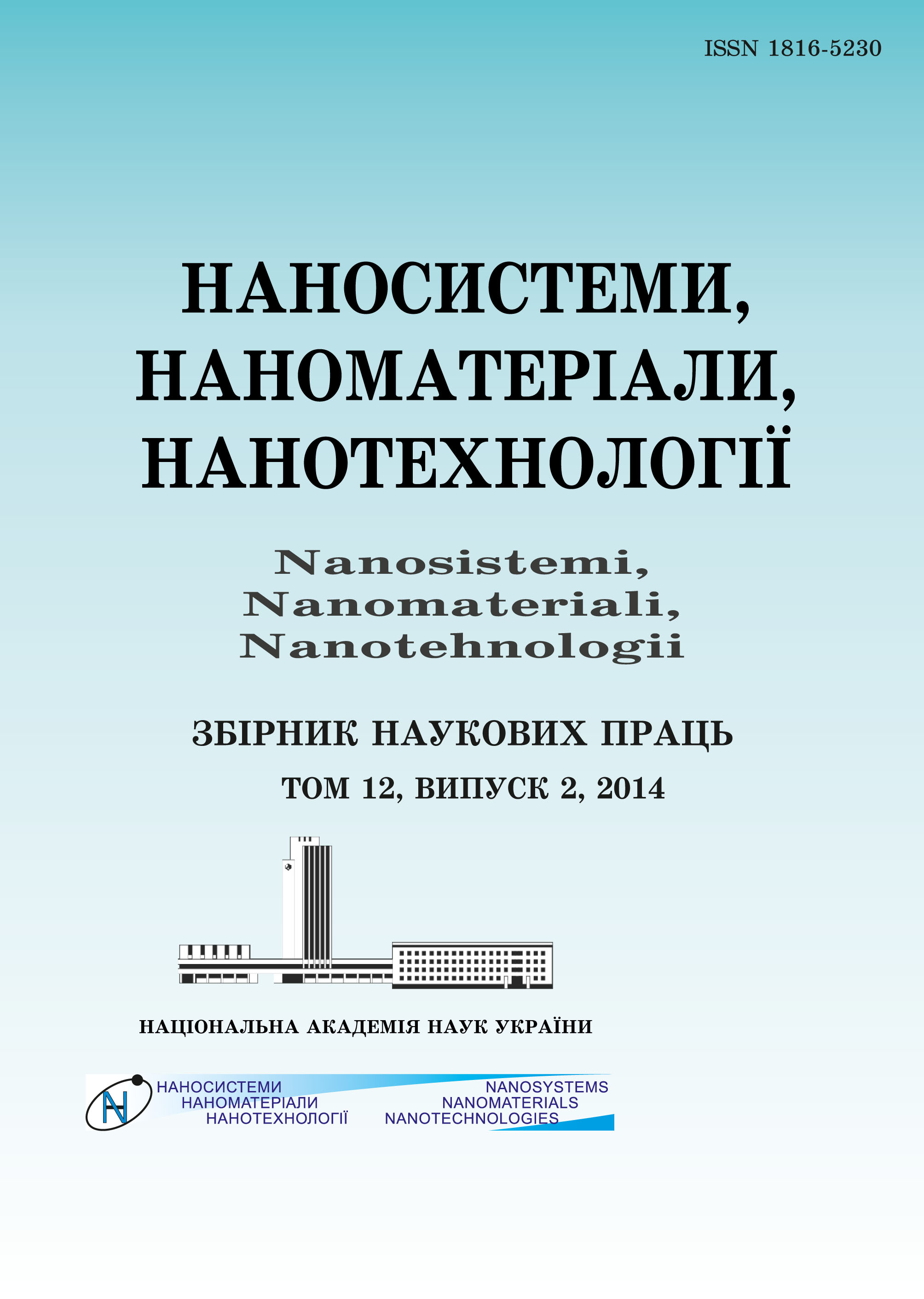|
|
|||||||||

|
Year 2024 Volume 22, Issue 4 |
|
|||||||
|
|||||||||
Issues/2024/vol. 22 /issue 4 |
|
Duan MANTAN, V.T. MOSIAK, D.L. PALAHECHA, K.V. KRYVENKO,
S.H. PONOMARCHUK, D.O. RIEZNIK, Ya.V. ZAULYCHNYI, O.V. STEPANOV, D.S. LEONOV,
M.Yu. BARABASH, and Yu.I. BOHOMOL
Structure and Properties of a Composite Material
Based on Silicon Carbide Reinforced with High-Entropy Diboride at the Mesolevel
959–971 (2024)
PACS numbers: 61.72.Ff, 62.20.de, 62.20.Qp, 62.23.Pq, 81.05.Je, 81.40.Np, 81.70.Jb
Directionally solidified SiC/(Ti0.2Zr0.2Hf0.2Nb0.2Ta0.2)B2 eutectic ceramics is prepared by the floating zone method based on the crucibleless zone melting of compacted powders using silicon carbide and transition-metal diboride (TiB2, ZrB2, HfB2, NbB2 and TaB2) powders as initial materials. The microstructure of as-prepared composites consists of a silicon carbide matrix uniformly reinforced on mesoscopic level by a single-phase high-entropy (Ti0.2Zr0.2Hf0.2Nb0.2Ta0.2)B2 diboride. The XRD analysis of the composites confirms the presence of the following phases in their compositions: SiC and (Ti0.2Zr0.2Hf0.2Nb0.2Ta0.2)B2. The effect of the solidification rate on the microstructural and micromechanical characteristics of the SiC/(Ti0.2Zr0.2Hf0.2Nb0.2Ta0.2)B2 ceramics is revealed. As found, an increase in the solidification rate leads to a decrease in the size of the reinforcing phase and an increase in hardness and fracture toughness from 22.2 to 24.9 GPa and 3.6 to 3.9 MPa?m1/2, respectively
KEY WORDS: silicon carbide, high-entropy borides, directionally solidified eutectic composites, Vickers hardness, fracture toughness
DOI: https://doi.org/10.15407/nnn.22.04.959
REFERENCES
- W. G. Fahrenholtz, G. E. Hilmas, I. G. Talmy, and J. A. Zaykoski, J. Am. Ceram. Soc., 90: 1347 (2010); https://doi.org/10.1111/j.1551-2916.2007.01583.x
- W. G. Fahrenholtz and G. E. Hilmas, Scripta Materialia, 129: 94 (2017); https://doi.org/10.1016/j.scriptamat.2016.10.018
- Brian C. Wyatt, Srinivasa Kartik Nemani, Gregory E. Hilmas, Elizabeth J. Opila, and Babak Anasori, Nat. Rev. Mater., 1 (2023); https://doi.org/10.1038/s41578-023-00619-0
- T. A. Parthasarathy, R. A. Rapp, M. Opeka, and R. J. Kerans, J. Am. Ceram. Soc., 92: 1079 (2010); https://doi.org/10.1111/j.1551-2916.2009.03031.x
- F. Monteverde and A. Bellosi, J. Electrochem. Soc., 150: B552 (2003); https://doi.org/10.1149/1.1618226
- X. T. Zhao, H. L. Wang, and R. Zhang, Key Engineering Materials, 697: 680 (2016); https://doi.org/10.4028/www.scientific.net/KEM.697.680
- E. Eakins, D. D. Jayaseelan, and W. E. Lee, Metall. Mater. Trans. A, 42: 878 (2011); https://doi.org/10.1007/s11661-010-0540-8
- H. Zhang, D. D. Jayaseelan, I. Bogomol, M. J. Reece, C. Hu, S. Grasso, and W. E. Lee, Journal of Alloys and Compounds, 785: 958 (2019); https://doi.org/10.1016/j.jallcom.2019.01.208
- J. Llorca and V. M. Orera, Progress in Materials Science, 51: 711 (2006); https://doi.org/10.1016/j.pmatsci.2005.10.002
- R. L. Ashbrook, Journal of the American Ceramic Society, 60: 428 (1977); https://doi.org/10.1111/j.1151-2916.1977.tb15527.x
- ². Bogomol, T. Nishimura, O. Vasylkiv, Y. Sakka, and P. Loboda, Journal of Alloys and Compounds, 485: 677 (2009); https://doi.org/10.1016/j.jallcom.2009.06.044
- Z. Jiamin, Z. Degui, Z. Haiwen, I. Bogomol, S. Grasso, and C. Hu, International Journal of Applied Ceramics Technology, 15: 619 (2018); https://doi.org/10.1111/ijac.12838
- J. Gild, Y. Zhang, T. Harrington, and S. Jiang, Sci. Rep., 6: 37946 (2016); https://doi.org/10.1038/srep37946
- W. G. Fahrenholtz, G. E. Hilmas, I. G. Talmy, and J. A. Zaykoski, Journal of the American Ceramic Society, 90: 1347 (2007); https://doi.org/10.1111/j.1551-2916.2007.01583.x
- G.-J. Zhang, W.-M. Guo, D.-W. Ni, and Y.-M. Kan, Journal of Physics, 176: 012041 (2009); https://doi.org/10.1088/1742-6596/176/1/012041
- W. Fahrenholtz and G. Hilmas, International Materials Reviews, 57: 61 (2012); https://doi.org/10.1179/1743280411Y.0000000012
- Ultra?High Temperature Ceramics: Materials for Extreme Environment Applications (Eds. W. G. Fahrenholtz, E. J. Wuchina, W. E. Lee, and Y. Zhou) (John Wiley & Sons: 2014); https://doi.org/10.1002/9781118700853
- Jin-Hao Yuan, Wei-Ming Guo, Yang Liu, Shi-Kuan Sun, Xiao-Ming Duan, De-Chang Jia, and Hua-Tay Lin, J. Am. Ceram. Soc., 105: 1629 (2022); https://doi.org/10.1111/jace.18209
- I. Bogomol and P. Loboda, Directionally Solidified Ceramic Eutectics for High-Temperature Applications. In: MAX Phases and Ultra-High Temperature Ceramics for Extreme Environments (Eds. J. Low and Y. Sakka) (IGI Global: 2013), p. 303; https://doi.org/10.4018/978-1-4666-4066-5.ch010
- K. Niihara, R. Morena, and D. P. H. Hasselman, J. Mater. Sci. Lett., 1: 13 (1982); https://doi.org/10.1007/BF00724706
- K. E. Petersen, Proceedings of IEEE, 70: 420 (1982); https://doi.org/10.1109/PROC.1982.12331
- Gang Yao, William-Yi Wang, Pei-Xuan Li, Ke Ren, Jia-Qi Lu, Xing-Yu Gao, De-Ye Lin, Jun Wang, Yi-Guang Wang, Hai-Feng Song, Zi-Kui Liu, and Jin-Shan Li, Rare Met., 42: 614 (2023); https://doi.org/10.1007/s12598-022-02152-5
- Iurii Bogomol, Elmira Ferkhatly, Serhii Ponomarchuk, Yaroslav Zaulychnyi, Myroslav Karpets, and Ievgen Solodkyi, J. Eur. Ceram. Soc., 44: 51 (2024); https://doi.org/10.1016/j.jeurceramsoc.2023.08.028
- P. B. Oliete, J. I. Pena, A. Larrea, V. M. Orera, and J. L. Lorca, Adv. Mater., 19: 2313 (2007); https://doi.org/10.1002/adma.200602379
- W. S. Rubink, V. Ageh, H. Lide, N. A. Ley, M. L. Young, D. T. Casem, E. J. Faierson, and T. W. Scharf, J. Eur. Ceram. Soc., 41: 3321 (2021); https://doi.org/10.1016/j.jeurceramsoc.2021.01.044
 This article is licensed under the Creative Commons Attribution-NoDerivatives 4.0 International License ©2003—2024 NANOSISTEMI, NANOMATERIALI, NANOTEHNOLOGII G. V. Kurdyumov Institute for Metal Physics of the National Academy of Sciences of Ukraine. E-mail: tatar@imp.kiev.ua Phones and address of the editorial office About the collection User agreement |